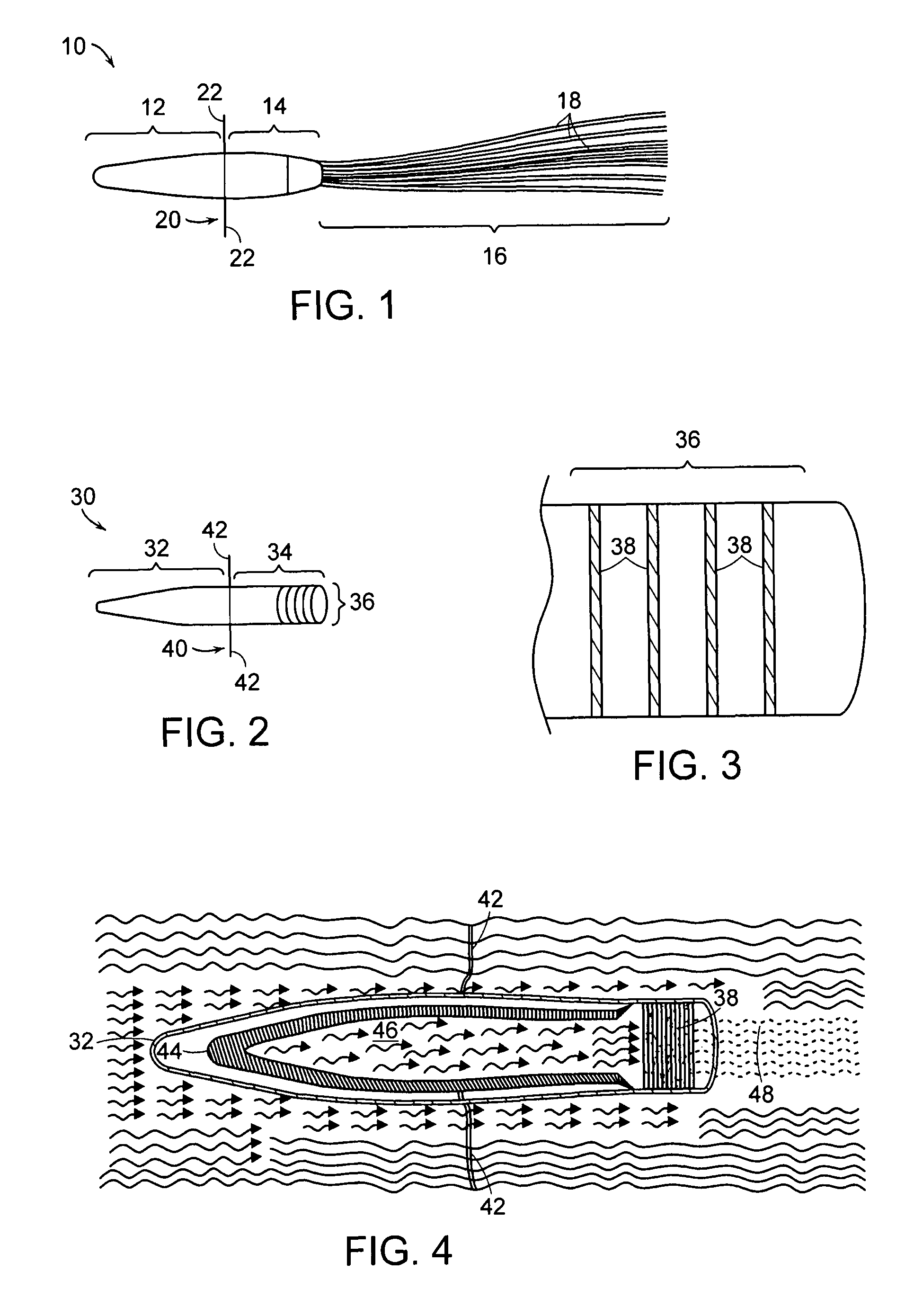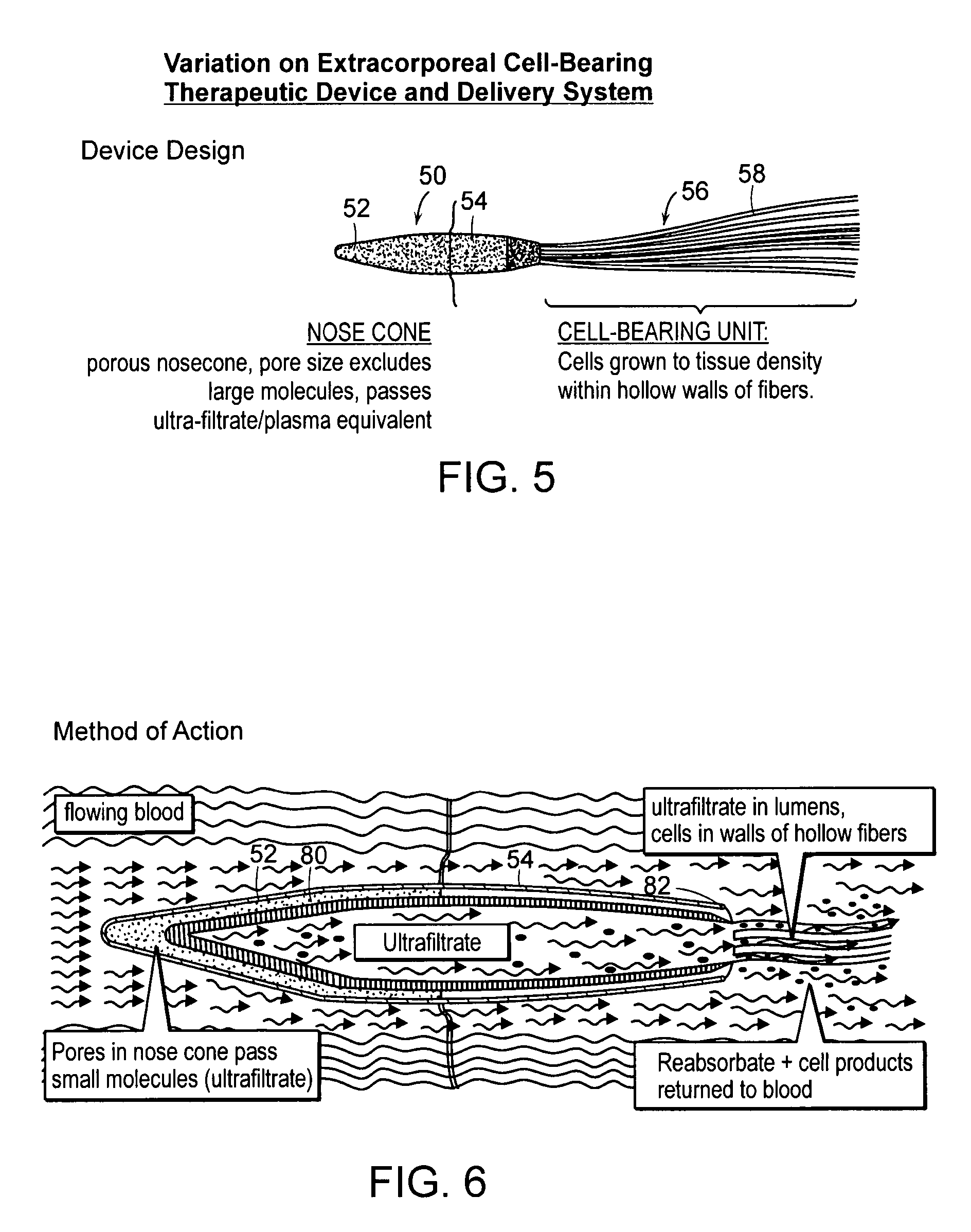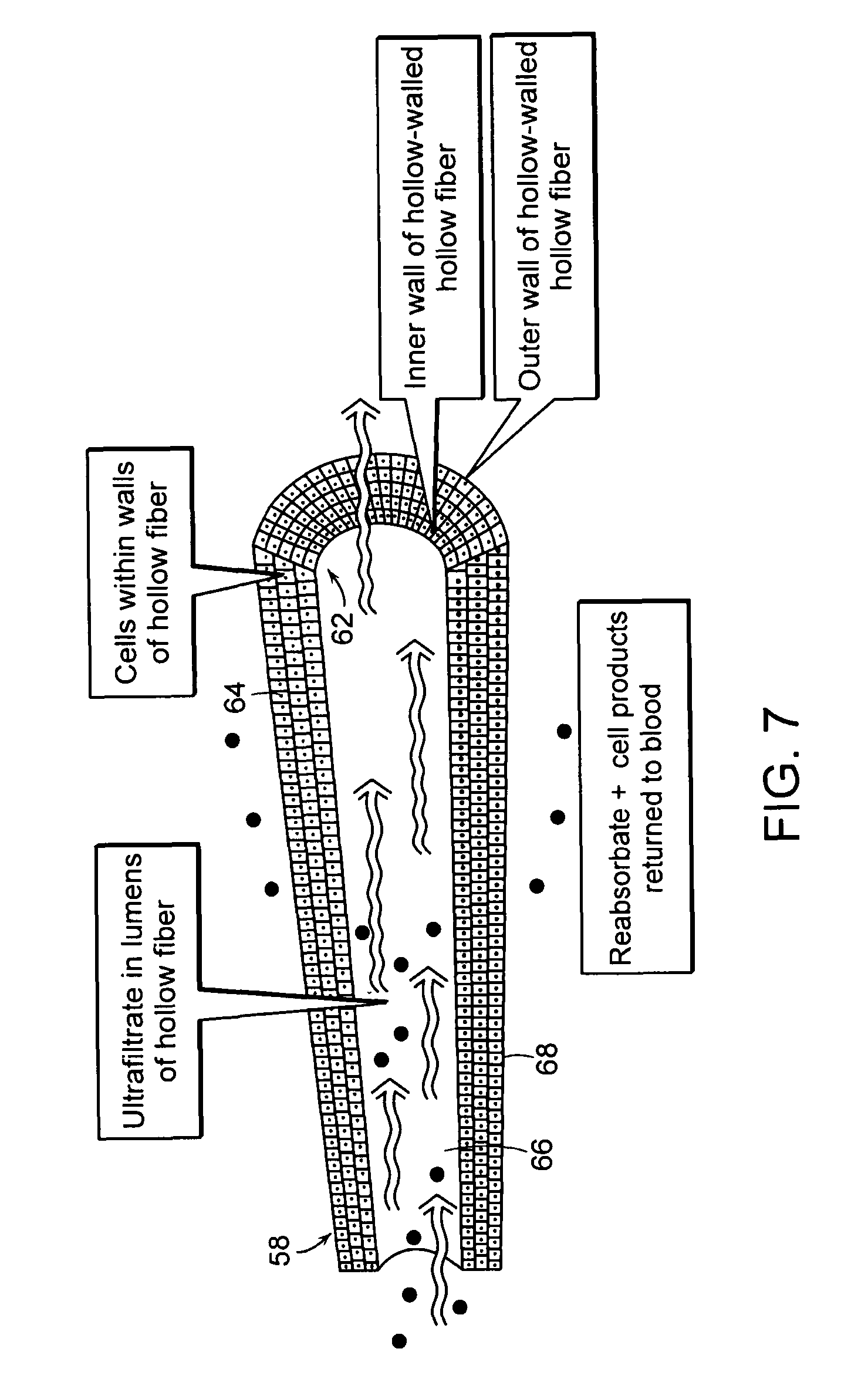Extracorporeal cell-based therapeutic device and delivery system
a technology of extracorporeal cells and therapeutic devices, applied in contraceptive devices, instruments, antibody medical ingredients, etc., can solve the problems affecting the treatment effect, and affecting the recovery of implantable devices, so as to achieve the effect of reducing the immune respons
- Summary
- Abstract
- Description
- Claims
- Application Information
AI Technical Summary
Benefits of technology
Problems solved by technology
Method used
Image
Examples
Embodiment Construction
e according to another embodiment of the present invention;
[0024]FIG. 3 is a detail cross section of the downstream end of the device illustrated in FIG. 2;
[0025]FIG. 4 is a cross section of the device illustrated in FIG. 2 and shows the flow of fluid through the device;
[0026]FIG. 5 is a perspective view of another embodiment of the invention;
[0027]FIG. 6 is a schematic cross section illustrating the embodiment of FIG. 5;
[0028]FIG. 7 is a detail view of an ultrafiltrate tube illustrated in FIGS. 5 and 6;
[0029]FIG. 8 is a schematic view of an extracorporeal blood circuit that can be used with embodiments of the present invention; and,
[0030]FIGS. 9-12 are graphs representing testing of embodiments of the present invention.
DETAILED DESCRIPTION
[0031]The present invention provides an extracorporeal device for delivering molecules into a mammal, for example, the systemic circulation of a mammal. The device of the invention is adapted for introduction in an extracorporeal blood conduit. Af...
PUM
| Property | Measurement | Unit |
|---|---|---|
| diameter | aaaaa | aaaaa |
| diameter | aaaaa | aaaaa |
| length | aaaaa | aaaaa |
Abstract
Description
Claims
Application Information
 Login to View More
Login to View More - R&D
- Intellectual Property
- Life Sciences
- Materials
- Tech Scout
- Unparalleled Data Quality
- Higher Quality Content
- 60% Fewer Hallucinations
Browse by: Latest US Patents, China's latest patents, Technical Efficacy Thesaurus, Application Domain, Technology Topic, Popular Technical Reports.
© 2025 PatSnap. All rights reserved.Legal|Privacy policy|Modern Slavery Act Transparency Statement|Sitemap|About US| Contact US: help@patsnap.com



